Hoyas have a distinct appearance that sets them apart from other houseplants. Their foliage is characterized by thick, waxy leaves that come in various shapes and colors. The leaves are typically dark green and can be almond-shaped, round, or spade-shaped, adding to the visual appeal of the plant.
Appearance of Hoyas



What makes Hoyas even more intriguing is the presence of variegated foliage in some cultivars. These varieties showcase patterns of cream, yellow, and pink, creating a stunning contrast against the deep green leaves. The variegated foliage adds a touch of uniqueness and elegance to the overall appearance of the Hoya plant.
While the foliage of Hoyas is impressive on its own, the real showstopper is the flowers. Hoyas produce exquisite clusters of fragrant blooms that resemble delicate porcelain. The flowers come in a range of colors, including pink, white, and scarlet, creating a vibrant and visually captivating display. The combination of lush foliage and beautiful flowers makes Hoyas a delightful addition to any indoor space.
| Characteristics of Hoyas | Detailed Description of Hoya Features |
| Foliage | Thick, waxy leaves |
| Dark green color | |
| Variety of shapes (almond, round, spade-shaped) | |
| Variegated foliage with cream, yellow, and pink patterns (some cultivars) | |
| Flowers | Clusters of fragrant blooms |
| Pink, white, or scarlet color |
No products found.
Light Requirements for Hoyas
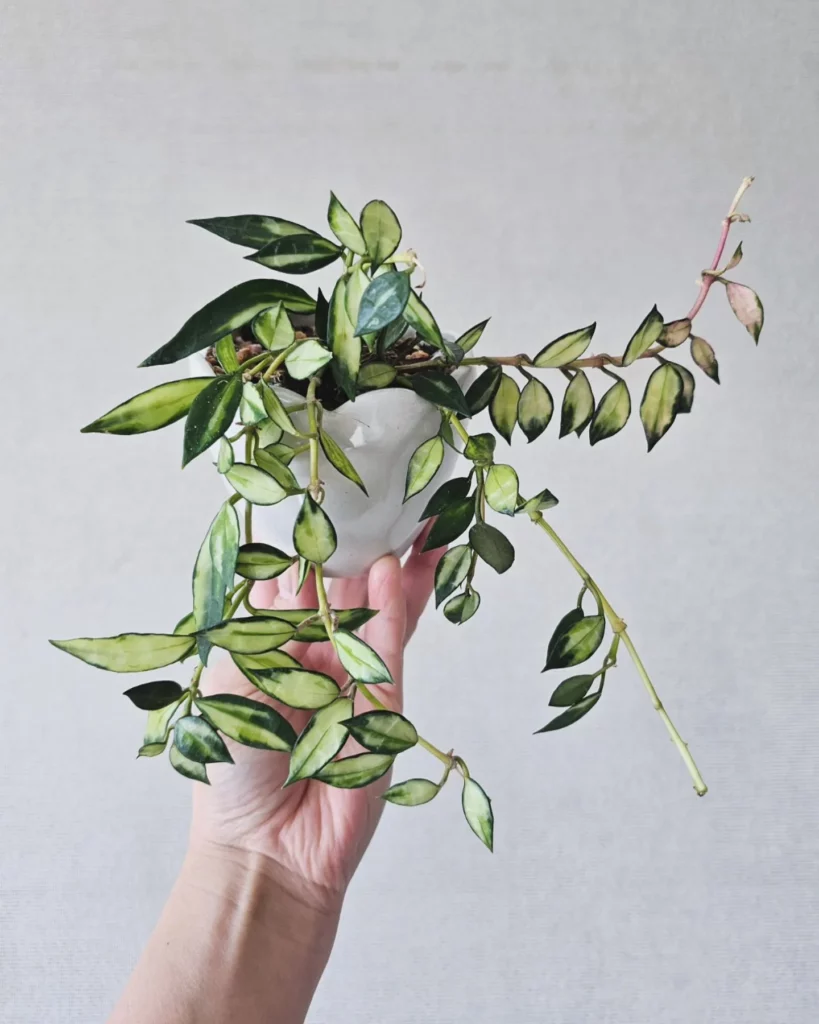
Proper lighting is essential for the health and growth of your Hoyas. Understanding their light requirements is key to keeping your plants vibrant and thriving.
Hoyas thrive in medium to bright indirect light. They prefer not to be exposed to direct sunlight or artificial light. Placing them near a window where they can receive filtered or diffused light is ideal. This way, your Hoyas can enjoy the benefits of natural sunlight without the risk of scorching their leaves.
It’s important to find the right balance of light for your Hoyas. If the light is too low, the leaves may brown, and the plant may become stunted. On the other hand, if the plants are exposed to too much direct sunlight, the leaves can get scorched, and it may inhibit blooming.
When considering indoor plant light for your Hoyas, it’s essential to provide them with the right amount of light without subjecting them to extreme conditions.
| Light Level | Conditions |
|---|---|
| Low Light |
|
| Medium Light |
|
| Bright Indirect Light |
|
Next, we’ll explore watering requirements for Hoyas to keep them properly hydrated and thriving.
Watering Hoyas
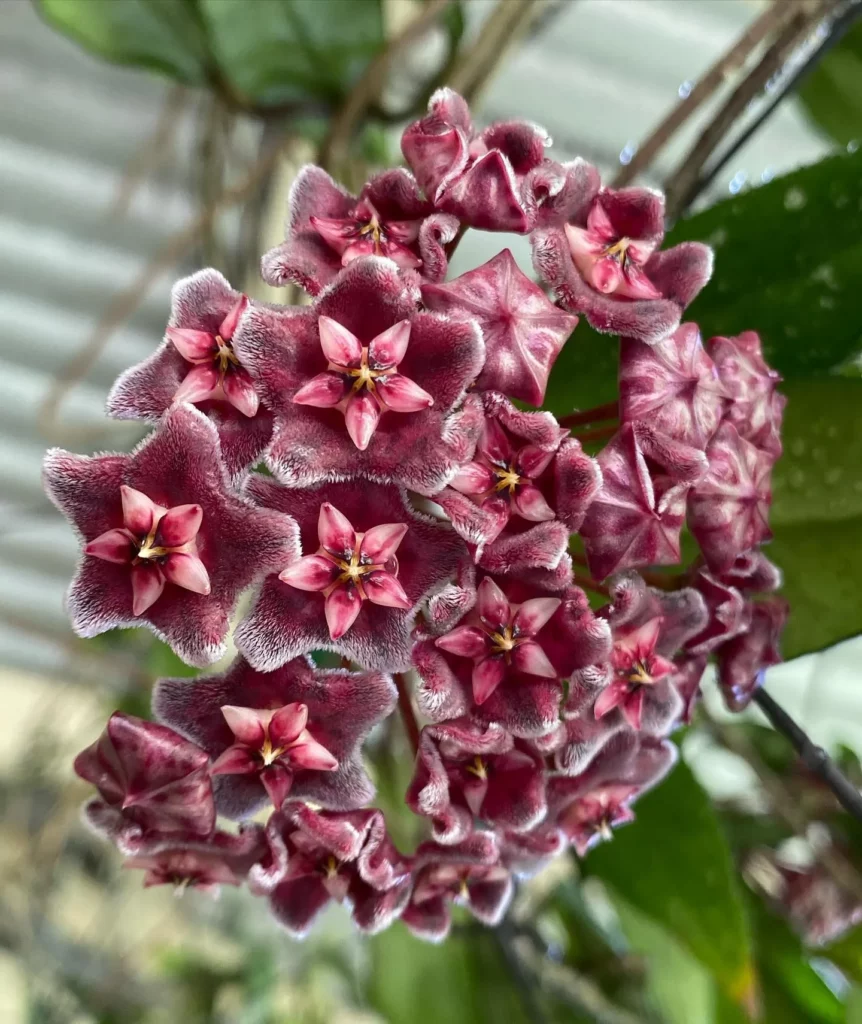


Proper watering is essential for Hoya plants. To ensure their health and prevent issues such as root rot, it’s important to follow a watering schedule that suits their needs. By understanding how often to water your Hoyas and observing signs of moisture in the soil, you can maintain optimal hydration for these beautiful houseplants.
Watering Schedule
When it comes to watering your Hoyas, it’s crucial to strike the right balance. These plants prefer their soil to dry out partially between waterings. Overwatering can lead to root rot, while underwatering can cause the leaves to dry out and wilt. Aim to water your Hoyas when the top inch of soil feels dry to the touch.
The frequency of watering will depend on several factors, including temperature, humidity, and the size of the pot. In general, during the active growing season (spring and summer), you may need to water your Hoyas every 7-10 days. However, always check the soil moisture before watering, as environmental conditions can vary.
During the dormant phase in winter, when Hoyas experience slower growth, waterings should be less frequent. As the plants require less moisture during this time, watering every 2-3 weeks may be sufficient. The key is to ensure that the soil dries out partially between waterings, preventing waterlogged conditions that can be detrimental to the plant’s health.
Signs of Proper Watering
Understanding when to water your Hoyas is crucial for their well-being. One way to gauge the water needs of your plants is to observe the leaves. When the Hoyas need watering, the leaves may start to pucker or wrinkle slightly. This is an indication that the plant is becoming thirsty and requires hydration.
No products found.
Additionally, monitor the soil moisture by inserting your finger into the soil up to the first knuckle. If the soil feels dry at this depth, it’s time to water your Hoyas. However, if the soil still feels moist, it’s best to wait until it dries out partially before watering again.
Remember that these guidelines are general recommendations. Factors such as humidity, temperature, and the specific needs of your Hoyas may influence the watering frequency. It’s essential to observe and adapt your watering routine to provide the ideal conditions for your plants.
| Watering Frequency | Active Growing Season (Spring and Summer) | Dormant Phase (Winter) |
|---|---|---|
| Temperature and Humidity | Every 7-10 days | Every 2-3 weeks |
| Pot Size | Water when the top inch of soil is dry | Water when the soil partially dries out |
Fertilizing Hoyas

Hoyas benefit from regular fertilizing during the growing season, which is typically spring, summer, and fall. To provide the essential nutrients for their growth and development, it’s important to use Hoya plant food or a balanced organic fertilizer with low salt content. This helps protect the sensitive roots of the plant while promoting healthy foliage and blooming.
When it comes to fertilizing schedule for Hoyas, it’s best to fertilize weakly and often. This means either fertilizing with every watering or every other watering. By doing so, you ensure that the plants receive a steady supply of nutrients without the risk of overfertilization.
No products found.
Follow the instructions on the fertilizer packaging for application rates and frequencies. Overfertilizing can lead to nutrient burn, which can damage the plant. It’s important to strike a balance and avoid excessive fertilization.
| Fertilizing Tips for Hoyas |
|---|
| Use a balanced organic fertilizer with low salt content to protect the roots of the plant. |
| Fertilize weakly and often, either with every watering or every other watering. |
| Follow the instructions on the fertilizer packaging to avoid overfertilization. |
| During the dormant period in winter, reduce or stop fertilizing. |
During the dormant period in winter, when the growth of Hoyas slows down, the fertilizing frequency can be reduced or stopped. This allows the plants to rest and prepare for the active growing season.
Proper fertilization, along with other care practices such as adequate light and watering, will help your Hoyas thrive and stay healthy, showcasing their characteristic waxy foliage and producing beautiful clusters of flowers.
Potting Hoyas


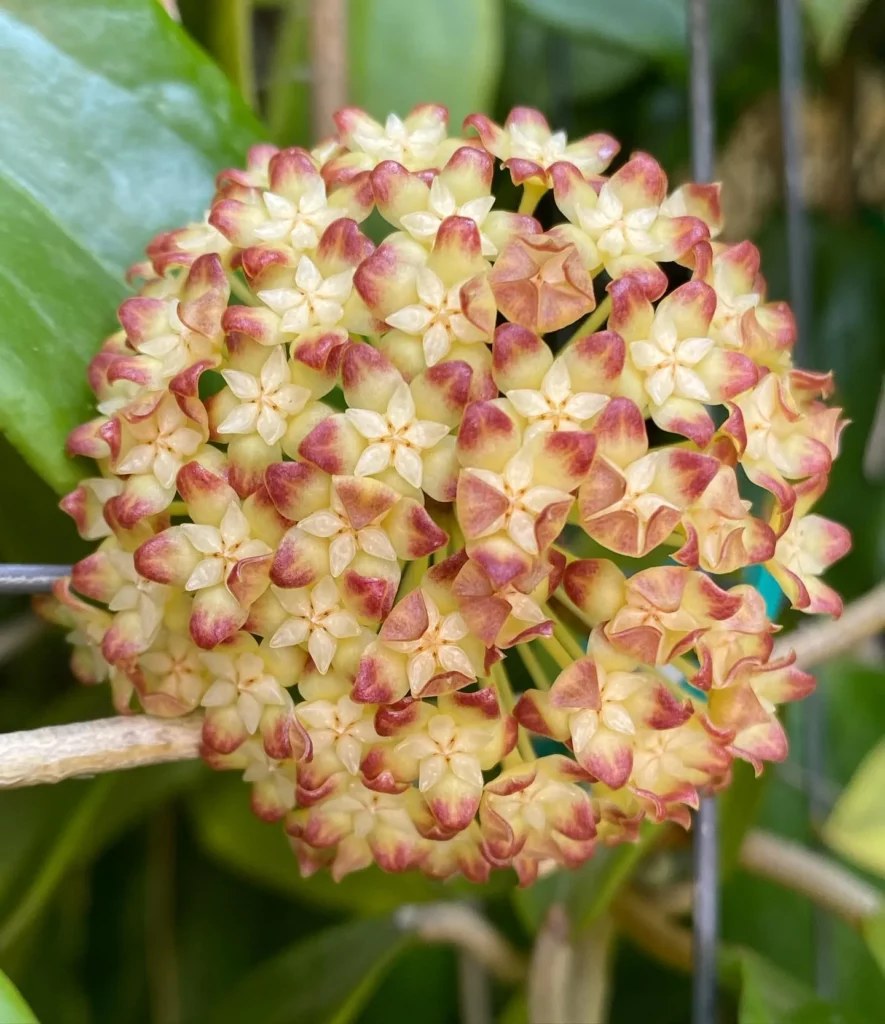
Proper potting is essential for the health and growth of your Hoyas. Here are some tips on potting and repotting your Hoyas:
- Repot when necessary: Hoyas prefer to be slightly root-bound, so repotting should only be done when the roots have replaced nearly all of the soil in the pot. This is usually a good indication that your Hoya needs a larger home.
- Choose the right pot size: When it comes to selecting a new pot for your Hoya, opt for one that is only slightly larger than the current one. Avoid overpotting, as excessive space can lead to waterlogging and root rot.
- Ensure proper drainage: Hoyas are sensitive to overwatering, so it’s crucial to use a pot with drainage holes. This allows excess water to escape and prevents waterlogged roots.
- Select well-draining soil: When potting or repotting your Hoya, use a well-draining soil mix that contains plenty of perlite. This helps to prevent water retention and ensures proper airflow to the roots.
- Be gentle with the roots: When repotting, it’s important to handle the roots with care. Avoid stripping away all the old soil, as this can cause unnecessary stress to the plant. Instead, gently loosen the roots and add fresh soil around them.
| Potting Tips for Hoyas | Benefits |
|---|---|
| Repot when necessary | Ensures the Hoya has enough space for root growth |
| Choose the right pot size | Prevents overpotting and water retention |
| Ensure proper drainage | Prevents waterlogged roots and root rot |
| Select well-draining soil | Facilitates proper airflow and prevents water retention |
| Be gentle with the roots | Minimizes stress on the plant during repotting |
Propagation of Hoyas
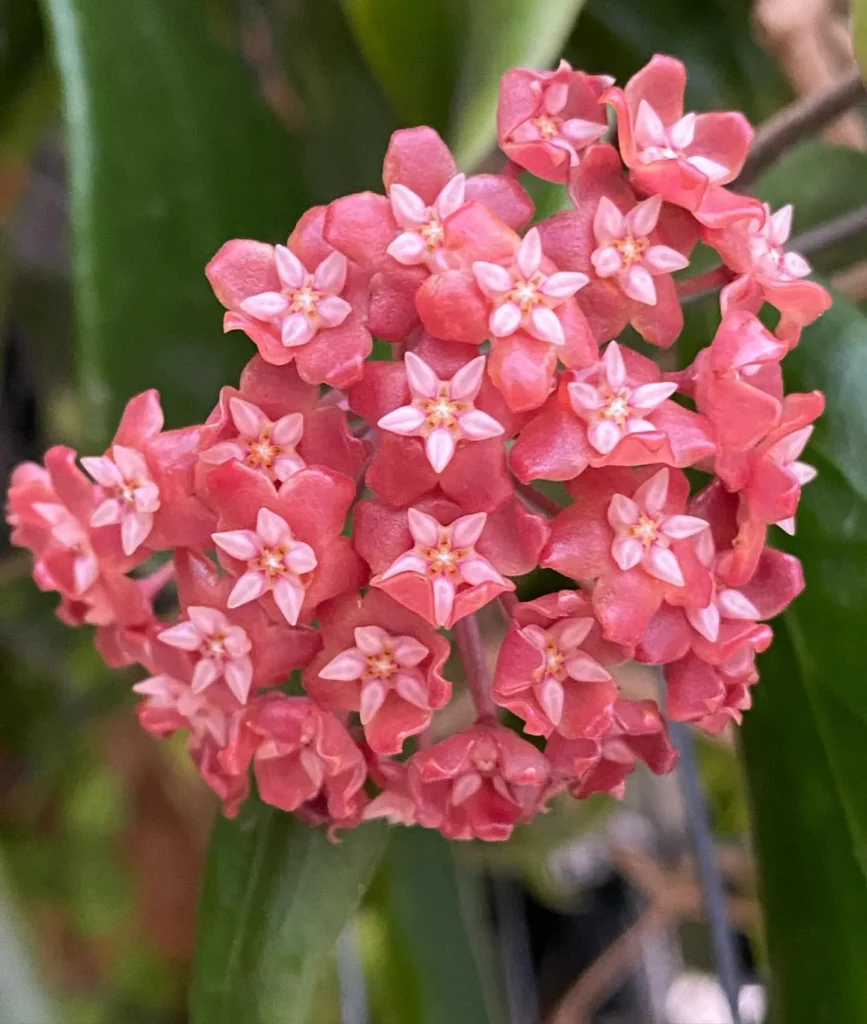
If you want to expand your Hoya collection or share these beautiful plants with fellow enthusiasts, propagating Hoyas is a rewarding and cost-effective method. The two primary ways to propagate Hoyas are through stem cuttings and air layering. Stem cuttings are the most popular and effective method, and here’s how you can do it:
- Select a healthy Hoya plant with strong and mature stems.
- Using clean and sharp pruning shears, cut a stem that is at least 4-6 inches long, ensuring it has at least two nodes.
- Remove any leaves from the lower half of the cutting, leaving a couple of healthy leaves at the top to aid in the rooting process.
- Place the cutting in a jar filled with water, making sure that the nodes are submerged in the water.
- Alternatively, you can dip the cutting in rooting hormone to enhance its chances of successful rooting.
- For increased humidity, cover the jar or use a plastic bag as a makeshift greenhouse.
- Change the water every few days to prevent the growth of mold or bacteria.
- Place the cutting in a bright location away from direct sunlight.
- Monitor the cutting regularly and look out for new root growth.
- Once the cutting has developed a strong root system, carefully transplant it into a well-draining potting mix.
- Continue providing the propagated Hoya with the appropriate care to ensure its successful growth.
Growth and Development of Hoyas


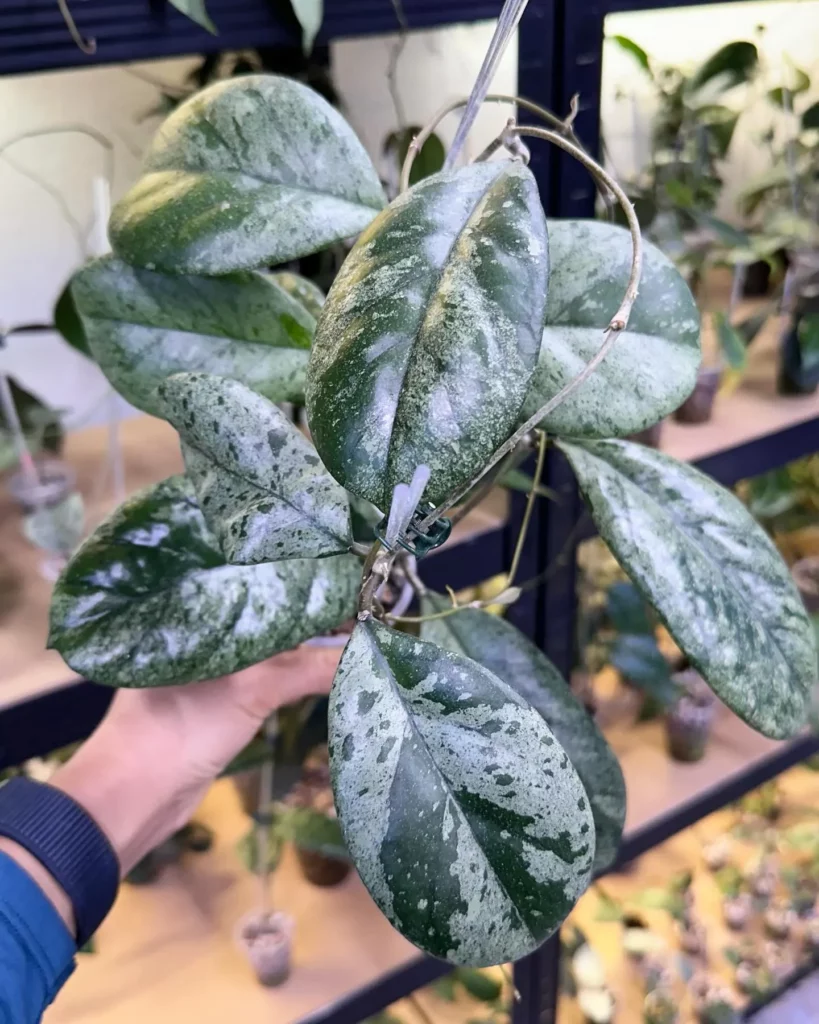
Hoyas are renowned for their rapid growth compared to other houseplants. With proper care and the right conditions, they can grow to impressive sizes, boasting abundant foliage and vibrant flowers. To ensure optimal growth and development of your Hoyas, it is crucial to provide the right care in terms of lighting, watering, fertilizing, and potting.
Lighting:
Hoyas thrive in medium to bright indirect light. Placing them near a window where they can receive filtered or diffused light is ideal. Direct sunlight or artificial lighting should be avoided, as it can damage the leaves and inhibit blooming.
Watering:
Hoyas prefer their soil to dry out partially between waterings. Overwatering can lead to root rot, so it’s important to let the soil dry out before watering again. Water your Hoyas when the leaves start to pucker or wrinkle slightly. The frequency of watering depends on factors such as temperature, humidity, and pot size.
Fertilizing:
Regular fertilizing during the growing season is essential for Hoyas. Use a balanced organic fertilizer with low salt content and follow the instructions on the packaging. Fertilize weakly and often, either with every watering or every other watering. Reduce or stop fertilizing during the dormant period in winter.
Potting:
Hoyas prefer to be slightly root-bound, so repotting should only be done when necessary. Choose a pot that is slightly larger than the current one and use a well-draining soil mix with plenty of perlite. Ensure the pot has drainage holes to avoid overwatering.
Regular pruning is not necessary for Hoyas as their long tendrils fill in with leaves and peduncles over time. With proper care and patience, your Hoya plants will continue to grow and thrive, adding beauty and lushness to your home.
| Factors | Hoya Growth Tips |
|---|---|
| Lighting | Provide medium to bright indirect light. |
| Watering | Allow soil to partially dry out between waterings. |
| Fertilizing | Regularly fertilize with a balanced organic fertilizer during the growing season. |
| Potting | Use a slightly larger pot and a well-draining soil mix. |
| Pruning | Regular pruning is not required. |
Common Pests and Diseases of Hoyas

Hoyas are generally resilient plants, but they can still be susceptible to pests and diseases, especially if there are infestations in nearby plants. It’s important to be vigilant and take preventive measures to keep your Hoyas healthy. Here are some common problems you may encounter:
Pests
- Mealybugs: These small, white, cottony insects can infest Hoyas and feed on their sap, causing yellowing leaves and stunted growth.
- Aphids: Aphids are tiny insects that can cluster on the leaves and stems of Hoyas, sucking out the sap and causing distorted growth.
- Spider mites: These minuscule pests can spin webs on Hoyas and feed on the leaves, causing yellow spots and webbing.
To control these pests, regularly inspect your plants for any signs of infestation. If you spot any, you can remove them manually or use insecticidal soap, following the instructions carefully.
Diseases
- Root rot: Overwatering and poor drainage can lead to root rot in Hoyas. The roots become mushy, and the plant may exhibit wilting leaves and a foul odor.
- Fungal diseases: Excessive fertilizer use and poor air circulation can create a humid environment that promotes fungal diseases, such as powdery mildew or leaf spot.
To prevent these diseases, it’s important to maintain proper care practices. Avoid overwatering by allowing the soil to dry out partially between waterings. Use well-draining soil and pots with drainage holes. Additionally, provide good air circulation by placing the plants in areas with adequate ventilation.
Additional Tips for Hoya Care



Here are some additional tips to help you care for your Hoya plants:
- Keep your Hoyas away from drafts and sudden temperature changes, as they prefer consistent temperatures.
- Regularly dust the leaves of your Hoyas to keep them clean and free from dust buildup, which can hinder their ability to photosynthesize.
- Rotate your Hoya plants every few weeks to ensure even growth and prevent them from leaning towards the light source.
- If you notice any yellowing or wilting leaves, check for signs of overwatering or underwatering and adjust your watering schedule accordingly.
- Consider using a humidifier or placing a tray of water near your Hoya plants to increase humidity levels, especially during dry winter months.
- Prune your Hoyas as needed to remove dead or damaged foliage, encourage bushier growth, and shape the plant if desired.
- Monitor your Hoyas for signs of pests such as mealybugs, aphids, or spider mites. If infestations occur, treat them promptly with appropriate pest control methods.
- Regularly check the roots of your Hoya plants to ensure they are healthy and not becoming root-bound. Repotting may be necessary if the roots have outgrown the current pot.
How to Induce Hoya Blooms
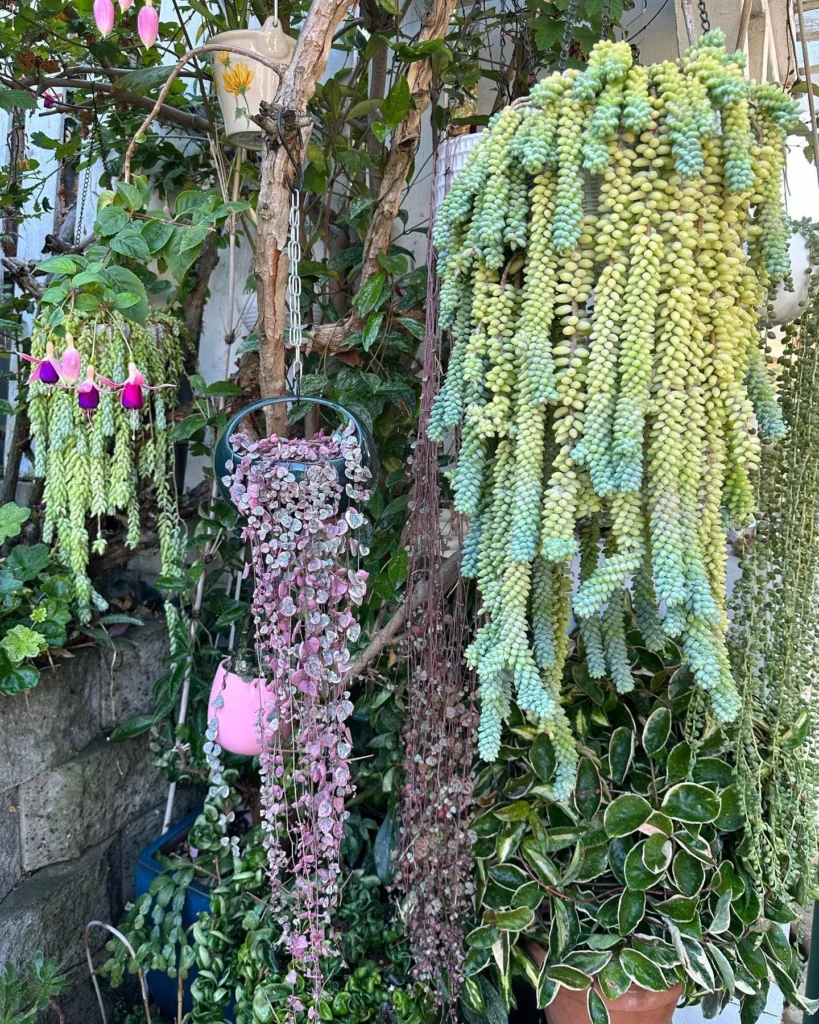
Hoya plants are known for their stunning, fragrant blooms that can add a touch of elegance to any space. If you’re eager to see your Hoya plants bloom, there are a few methods you can try to encourage their flowering:
- Provide Adequate Light: Hoyas require bright indirect light to stimulate blooming. Place your plant in a location where it can receive plenty of natural light, but avoid direct sunlight, as it can scorch the leaves.
- Maintain Proper Temperature: Hoyas thrive in warm temperatures, ideally between 60°F and 80°F (15°C and 27°C). Avoid exposing your plant to sudden temperature fluctuations, as it can hinder blooming.
- Ensure Proper Watering: Consistent watering is crucial for Hoya blooming. Keep the soil slightly moist but not waterlogged. Allow the top inch (2.5 cm) of soil to dry out between waterings. Overwatering can lead to root rot and inhibit flowering.
- Fertilize Wisely: Use a balanced, water-soluble fertilizer formulated for flowering plants. Apply the fertilizer according to the package instructions, typically every 2-4 weeks during the growing season. Avoid overfertilization, as it can result in excessive foliage growth at the expense of flowering.
Hoya Blooming Tips
| Method | Description |
|---|---|
| Provide Adequate Light | Place your Hoya plant in a location with bright indirect light to stimulate blooming. |
| Maintain Proper Temperature | Keep your Hoya plant in a temperature range of 60°F to 80°F (15°C to 27°C) to promote blooming. |
| Ensure Proper Watering | Water your Hoya plant consistently, allowing the top inch of soil to dry out between waterings. |
| Fertilize Wisely | Use a balanced, water-soluble fertilizer for flowering plants and apply it according to the package instructions. |
Conclusion
In conclusion, Hoya plants are versatile and beautiful houseplants that can thrive with proper care. From their distinct appearance to their specific light and watering requirements, Hoyas have unique needs that should be met for optimal growth and blooming. By following the tips and techniques outlined in this Hoya care guide, you can cultivate healthy, vibrant Hoyas in your home and enjoy their lush foliage and fragrant flowers for years to come.
FAQ
What is a Hoya plant?
The Hoya plant, also known as the Wax plant, is a popular houseplant with thick waxy leaves and beautiful fragrant flower clusters.
What does a Hoya plant look like?
Hoyas have thick, waxy leaves that can vary in shape and color. The leaves are often dark green and can be almond-shaped, round, or spade-shaped. Some Hoya cultivars have variegated foliage with patterns of cream, yellow, and pink. They produce clusters of fragrant blooms in pink, white, or scarlet.
What light conditions do Hoyas prefer?
Hoyas thrive in medium to bright indirect light. They prefer filtered or diffused light and should not be exposed to direct sunlight or artificial light.
How often should I water my Hoya plant?
Hoya plants prefer their soil to dry out partially between waterings. They should be watered when the leaves start to pucker or wrinkle slightly. The frequency of watering will depend on factors such as temperature, humidity, and pot size.
How should I fertilize my Hoya plant?
Hoyas benefit from regular fertilizing during the growing season using a balanced organic fertilizer with low salt content. Fertilize Hoyas weakly and often, either with every watering or every other watering.
When should I repot my Hoya plant?
Repotting should only be done when necessary, typically when the roots have replaced nearly all of the soil in the pot. Choose a slightly larger pot and use a well-draining soil mix with plenty of perlite. Hoyas prefer to be slightly root-bound.
How can I propagate my Hoya plant?
Hoyas can be propagated through stem cuttings or by air layering. Take cuttings with at least two nodes and place them in wet sphagnum moss or water until they develop a strong root system.
How fast do Hoyas grow?
Hoyas are known for their relatively fast growth compared to other houseplants. With proper care, they can grow to be quite large and produce abundant foliage and flowers.
What are common pests and diseases that can affect Hoyas?
Hoyas are generally resilient against pests and diseases, but they can be affected by mealybugs, aphids, spider mites, and root rot. Regular inspections, preventive measures, and proper care practices can help control and prevent these issues.
What are some additional tips for Hoya care?
Some additional tips include providing support for climbing varieties, avoiding leaf shine products, maintaining good air circulation, and keeping an eye out for signs of stress or nutrient deficiencies.
How can I encourage my Hoya plant to bloom?
Hoyas bloom when they reach maturity, and there are a few methods to encourage blooming, such as providing appropriate light conditions, following proper watering and fertilizing practices, and maintaining consistent care.






I have a heart shaped Hoya for a year. It hasn’t grown an inch or bloomed. Does this type not do anything?
Hoya plants, including the heart-shaped Hoya (Hoya kerrii), are generally known for their slow growth, but they should still show some signs of growth and occasional blooming if they are healthy. Ensure your plant is receiving proper indirect sunlight, well-draining soil, and regular but not excessive watering. Be patient, as some Hoyas may take a few years to mature and start blooming, and make sure to maintain a consistent care routine to encourage growth and potential flowering.
I have tried plant identifying apps for my Hoyas but they are usually wrong. Do you know of an app that is reliable?